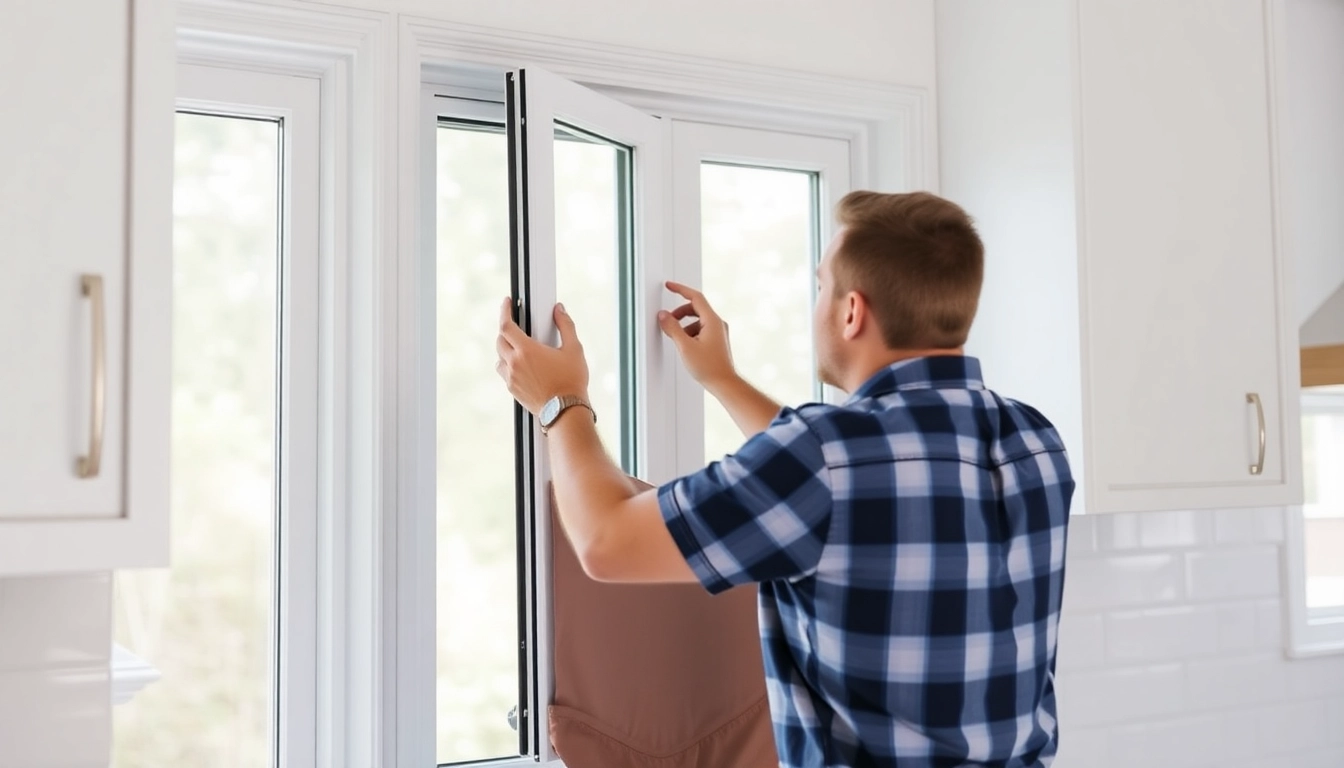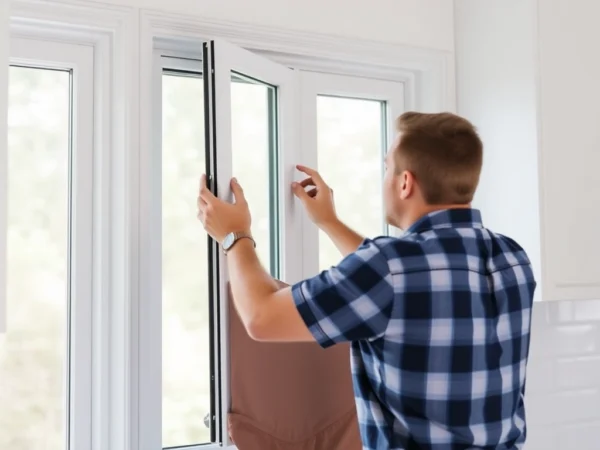Replacement window installers near me: Your guide to trusted Denver-area pros and flawless window replacements
Replacing windows is more than a cosmetic upgrade; it is a strategic investment in home comfort, energy efficiency, and long‑term value. The quality of installation directly affects how well the new panes perform, how long they last, and how smoothly they function year after year. Choosing the right replacement window installers near you means assessing not just price, but the full spectrum of expertise, process, and aftercare that drives real results.
As you compare options, consider factors like qualifications, warranties, installation timelines, and local reputation. For a convenient starting point, view our directory of replacement window installers near me.
Why replacement window installers near me matter for home comfort
Energy efficiency and comfort impact
Modern replacement windows with proper installation reduce drafts, minimize heat transfer, and improve sound attenuation. In climates with cold winters, a well‑sealed window minimizes heat loss and reduces furnace cycling, while in warmer seasons it lowers cooling loads. Expect a noticeable improvement in indoor comfort, especially along poorly insulated walls or in older homes where single‑pane or sash‑hung designs once dominated.
Beyond the numbers on an NFRC label, the practical benefit shows up in more even temperatures from room to room and a quieter living space. When installers correctly outfit frames with Low‑E glass, proper gas fills, and insulated spacers, the overall system achieves a tighter thermal envelope—translating to lower energy bills and fewer temperature swings during gusty Colorado days.
Key factors in installer qualifications
Look for licensed contractors with clear insurance coverage and manufacturer certifications. Reputable teams bring precise measurement protocols, proven flashing and moisture management, and detailed project plans that align with window frame type (vinyl, wood, or fiberglass) and glass packages. Certifications from major manufacturers or energy‑efficiency programs indicate adherence to installation best practices and post‑installation support.
A qualified installer also demonstrates meticulous attention to surface preparation, sill alignment, and weather sealing, all of which prevent leaks and long‑term deterioration. Ask for a written scope of work, a breakdown of included materials, and a plan for protecting interior finishes during removal and reinstallation.
Common installation timelines and milestones
Typical projects unfold through clear milestones: initial measurement and color/glazing selection, lead time for order fulfillment, site protection and removal of old units, precise installation with shims and plumb checks, flashing and water management, interior trim and caulking, and a final walkthrough. Local markets, including Denver’s, often schedule windows within a few weeks of purchase, with weather windows and permit considerations influencing timing.
A well‑managed project buffers in contingency for unusual sizes, custom finishes, or back‑ordered components. Transparent communication about scheduling, potential weather delays, and expected cleanup helps homeowners plan around disruption and ensures a smoother transition from old to new.
Evaluating quotes, warranties, and installation quality
Getting multiple quotes: what to compare
When obtaining estimates, compare the complete package, not just the sticker price. Ensure quotes specify the scope of work, number of openings, frame type, glazing package, and hardware. Different quotes should itemize removal of old windows, disposal, any necessary structural work, and trim or painting afterward. Beware unusually low bids that omit essential steps, as improper installation often leads to expensive repairs later.
Also compare energy‑related upgrades: double vs. triple glazing, Low‑E coatings, inert gas fills, and high‑performance spacers. Ask for a sample NFRC rating and ensure the selected package aligns with comfort goals and climate considerations. A comprehensive quote that includes these details is a strong predictor of a durable, efficient outcome.
Understanding warranties and service plans
Warranties protect both materials and labor, but they vary in coverage and transferability. Look for a manufacturer warranty on the window unit (often 20 years or more) coupled with a labor warranty from the installer (typically 5–10 years). Clarify what triggers coverage (manufactured defects, seal failures, or hardware wear) and who handles warranty claims. A solid service plan can also cover maintenance advice, periodic checkups, and prompt response if issues arise.
For ongoing value, prioritize installers who provide clear maintenance guidance and a straightforward process for service calls. Transparent communication about what’s covered and how to request service helps prevent future disputes and ensures you receive timely support.
Visual and post‑installation cleanup expectations
A professional installation leaves the site clean and safe. Expect removal of old materials, careful protection of floor and furniture, tidy interior trim, and exterior caulking that matches the home’s aesthetics. After installation, perform a basic inspection: confirm the windows open and close smoothly, verify weather seals around the frame, and check for consistent gaps that may indicate misalignment.
If anything looks off, request a follow‑up visit to address gaps, cracking caulk, or misfit trims. A quality installer will welcome this review as part of the service, not as a problem to be avoided.
Local replacement window installers near me: proximity, reputation, and results
Proximity and scheduling flexibility
Local installers reduce travel time, support faster scheduling, and can align installation windows with your calendar. Proximity also helps when assessing post‑installation performance or arranging quick follow‑ups after seasonal changes. In busy markets, flexible crews that offer weekend or after‑hours options minimize disruption to daily routines.
Reputation signals: reviews and credentials
Reputation matters as much as technical capability. Read multiple reviews to gauge consistency in workmanship, communication, and reliability. Look for credible signals like long‑standing service, established licenses, and visible endorsements from manufacturers or energy programs. While stars are helpful, concrete examples—completed project photos, client testimonials, and case studies—provide deeper insight into what you can expect.
Proof of work: warranties, licenses, and portfolios
Request a portfolio of prior installations that resemble your project (similar opening sizes, weather conditions, and frame types). Ask for copies of licenses and insurance certificates, and verify that all installers hold current credentials. A transparent contractor will readily share project references and provide a clear path for future service or warranty requests.
Modern Day Window: Step-by-step from selection to clean, professional installation
Product selection: frames, glass, and energy ratings
Product choices start with frame material—vinyl, wood, or fiberglass—each with distinct maintenance, aesthetics, and insulating properties. Glass packages vary from standard double glazing to high‑performance Low‑E with argon or krypton fills. Energy ratings from NFRC guide performance: lower U‑values indicate better insulation, and SHGC values balance solar gain with heating and cooling needs. For Colorado homes, a balance that reduces winter heat loss while controlling summer heat is typically prioritized.
Consider color and hardware options, as well as exterior durability against UV exposure and weather. A thorough counselor will present several package tiers, with side‑by‑side comparisons to help you choose the best fit for your climate, budget, and style.
Step-by-step install process
The installation sequence usually begins with protective measures for your interior and exterior, followed by careful removal of existing sashes. The new unit is set, plumbed, and nailed or fastened, then precisely squared to the opening. Flashing and moisture barriers are applied to prevent leaks, after which the frame is caulked, insulated, and trimmed. Exterior sealants and interior finishes are coordinated to match your home’s aesthetics.
Throughout, installers test operation, inspect for gaps or misalignment, and correct anything that could compromise performance. A well‑executed install ends with a thorough cleanup and a detailed walkthrough to confirm satisfaction and document warranty cards.
Quality assurance and final walk-through
A final walk‑through confirms that all openings function smoothly, seals are intact, and no damage occurred during work. The installer should leave you with documentation—product specs, warranty information, and care recommendations—and answer questions about long‑term performance, maintenance, and service options.
Modern Day Window: Measuring success with performance metrics and ongoing support
Performance metrics: U-value, SHGC, and air leakage
Performance metrics come from standardized testing. U‑value indicates heat transfer; lower is better. SHGC reflects solar heat gain; a moderate SHGC is often ideal in mixed climates. Air leakage ratings reveal how well the window prevents drafts. A window with strong ratings across these metrics typically delivers the comfort gains homeowners seek and supports energy savings over time.
Warranty and maintenance considerations
Maintenance is part of owning high‑performing windows. Regular cleaning of tracks, seals, and hardware extends life and preserves efficiency. For warranties, keep the purchase documents, installation records, and any service reports. When service is needed, timely verification that the issue is covered prevents escalation and ensures continued performance.
Measuring ROI: energy savings and resale value
While individual results vary, modern, well‑installed replacement windows typically bring noticeable energy savings, improved comfort, and enhanced curb appeal. In many homes, benefits compound over years through lower heating and cooling costs and higher resale appeal. A careful calculation considers local utility rates, window U‑values, and the home’s existing performance, yielding a practical sense of payback and value.







